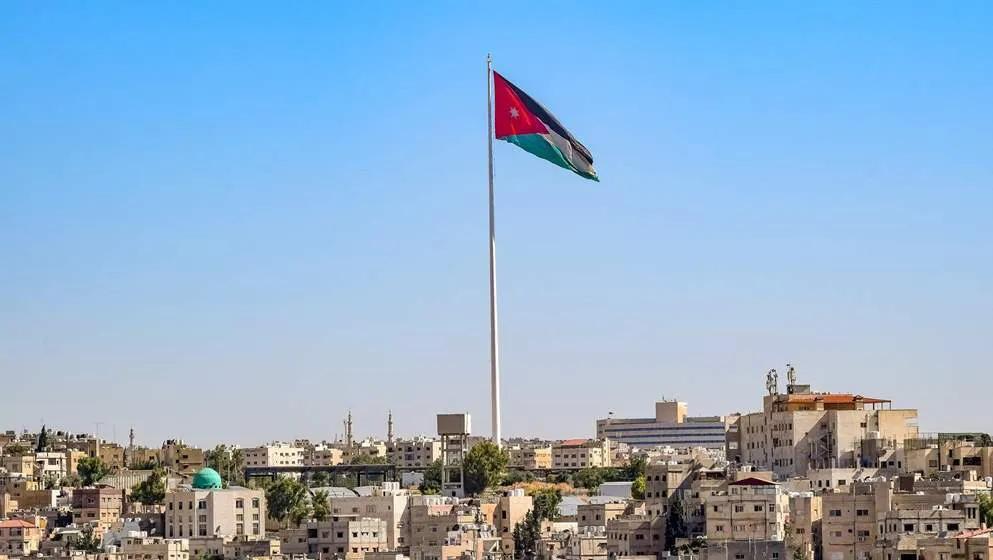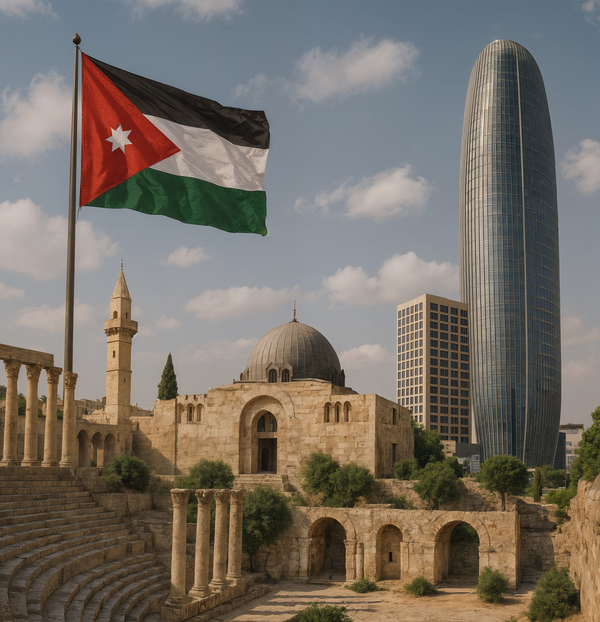Each nation writes history not only through books or speeches, but also through its buildings and cities. For Jordan, May 25th, Independence Day is much more than just a political act; it is a time to think about how the city's buildings, streets, and monuments narrate the evolving story of who we are.
From ancient Nabataean rock carvings to the limestone cities of Amman, and Ottoman forts to post-independence modernism, all architecture in Jordan is a living archive—a mixture of memory, identity, and vision.
Timeline: Jordanian Architectural Evolution
Before Independence: The Foundations of Identity
Ottoman Legacy (16th–early 20th century)
Amman, once an ancient city long forgotten, was revived in the late Ottoman period. Functional military architecture and public buildings, like the Hejaz Railway Station, began forming what little urban core there was. Houses were of stone, with thick walls and interior courtyards following the terrain of hills and valleys.

1920s–1940s: The Emirate of Transjordan
As the Hashemite State emerged, so were seeds for the national architecture. First royal compounds and government institutions reflected a meld of Arab traditions with colonial administrative order. Architecture was the symbol of sovereignty in the making.
Post-Independence: Architecture as a Statement
From 1950s–1970s: Building the Capital
The period from the '50s to the '70s: Making Capital
After independence in 1946, Amman expanded at a rapid rate. Government buildings, ministries, and schools were constructed with simple forms but with strong symbols of presence. Buildings such as the Parliament House and the University of Jordan reflected aspirations of a modern, educated state.
Architectural elements:
- Local limestone as a building material
- Symmetrical monumental facades
- Arches as forms derived from Islamic tradition
- The presence of nature and gardens in public spaces

A Nation of Refugees: Housing and Urban Resilience
With waves of displacement--notably, after 1948 and then 1967--urban spaces of Jordan grew into sites for occasions of adaptations and resilience. What began as refugee camps matured into neighborhoods, affecting the informal architecture of Amman. In the city are engrained many instances of migration, memory, and reinvention are ingrained.

20th Century Latter Half: The Search for an Architectural Identity
Architects started to reinterpret Islamic architecture with a modern idiom, combining the spirit with urbanism. Proposals for public buildings like the Royal Cultural Center were meant to reflect the blend of tradition and contemporary form.
approach:
- Courtyards and spatial hierarchy
- Vernacular materials
- Architectural narratives grounded in Arab-Islamic heritage
21st Century: Sustainability and Global Influence
Today, Amman faces challenges of urban sprawl, climate change, and globalization. Yet, a new generation of architects is emerging, combining sustainability with cultural rootedness.
Examples:
- Abdali Boulevard: A new business district with high-rise modernity
- Eco-mosques and green housing: Reclaiming harmony between architecture and the environment
- Cultural centers: Reflecting a fusion of tradition and dialogue

Architecture as Cultural Independence
Jordan's architecture is more than concrete and stone—it is a form of cultural independence. Every arch and alleyway tells the story of a nation navigating its past and dreaming of its future.
As we celebrate Independence Day, we must also honor the architects, builders, and thinkers who helped shape a built environment that reflects our resilience, beauty, and voice.

Happy Independence Day, Jordan.
Sources :
- Al-Asad, M., & Musa, M. (2012). Architecture and Identity: The Middle East. Center for the Study of the Built Environment (CSBE).
- Steele, J. (2005). Rasem Badran: Architect, Engineer, Humanist. Thames & Hudson.
- Daher, R. F. (2011). Amman: Disguised Genealogy and Recent Urban Restructuring and Neoliberal Threats. In J. Nasr & M. Volait (Eds.), Urbanism: Imported or Exported? Native Aspirations and Foreign Plans (pp. 197–219). Wiley.
- King, G. R. D. (1998). The Historical Mosques of Amman. Ministry of Awqaf and Islamic Affairs.
- El-Sheshtawy, Y. (Ed.). (2008). The Evolving Arab City: Tradition, Modernity and Urban Development. Routledge.
- Archnet. (n.d.). Rasem Badran: Projects and Philosophy. Retrieved from https://www.archnet.org
- Royal Hashemite Court. (n.d.). Historical Timeline and Architecture of Independence. Retrieved May 2025, from https://www.rhc.jo
- Darat al Funun. (n.d.). Architectural and Cultural Archives. Retrieved May 2025, from https://daratalfunun.org


